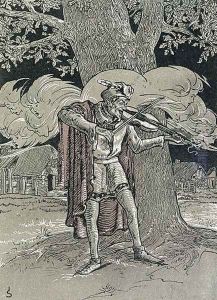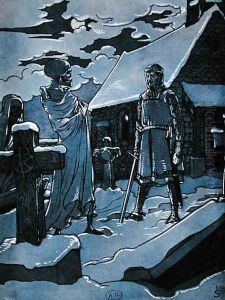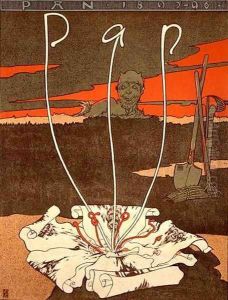Joseph Sattler Paintings
Joseph Sattler was a German graphic artist, illustrator, and painter, recognized for his distinctive style that bridged the transition from the Art Nouveau to the early Modernist periods. He was born on March 3, 1867, in Silesia, which was then part of the Kingdom of Prussia, and is now located in modern-day Poland. Sattler's artistic talents emerged at an early age, prompting him to pursue formal education in the arts.
He studied at the Academy of Fine Arts in Munich, where he began to develop his unique style characterized by sinuous lines and a flair for decorative ornamentation that would later be associated with the Jugendstil movement, the German version of Art Nouveau. His work was influenced by symbolism and the arts and crafts movement, and he often depicted mythological and fantastical subjects.
Sattler's illustrations and graphic works gained wide recognition for their originality and craftsmanship. He contributed to various magazines, including the influential 'Jugend', which played a significant role in the propagation of the Jugendstil movement. Sattler's work extended beyond illustration; he was also known for his posters, book designs, and ex libris (bookplates), which combined both ornamental and pictorial elements. His style was marked by a fluidity of line and a harmonious interplay between type and image, which made his designs stand out in the burgeoning world of print media.
In addition to his graphic works, Sattler was also involved in teaching and promoting the arts. His influence as an artist was recognized not only in Germany but also internationally, as he participated in exhibitions across Europe and contributed to the spread of Jugendstil aesthetics. Despite the changing tides of artistic trends, Sattler remained true to his distinctive style throughout his career.
Joseph Sattler's contribution to the arts was cut short by his death on May 8, 1931. His legacy, however, continued to influence artists and designers, particularly in the realm of graphic design, where his emphasis on the unity of form and function and the integration of text and image remains relevant. His works are preserved in various art collections and continue to be studied for their unique blend of symbolism, Art Nouveau, and nascent modernist elements.


